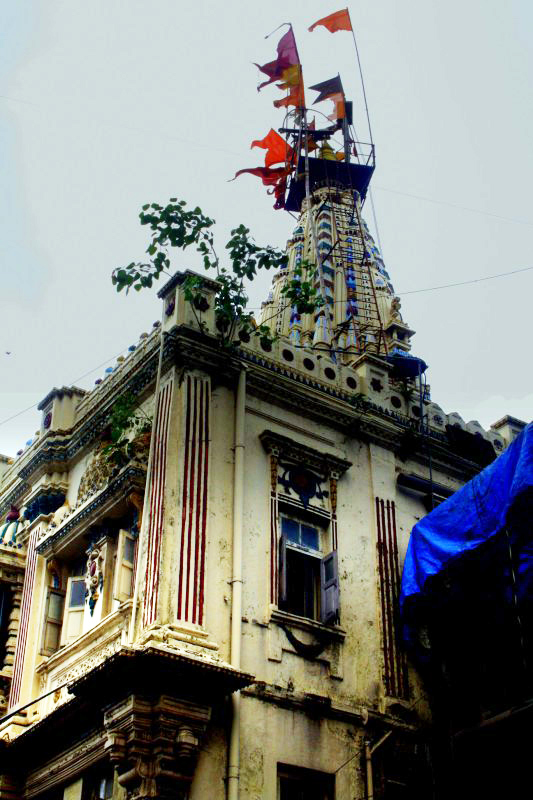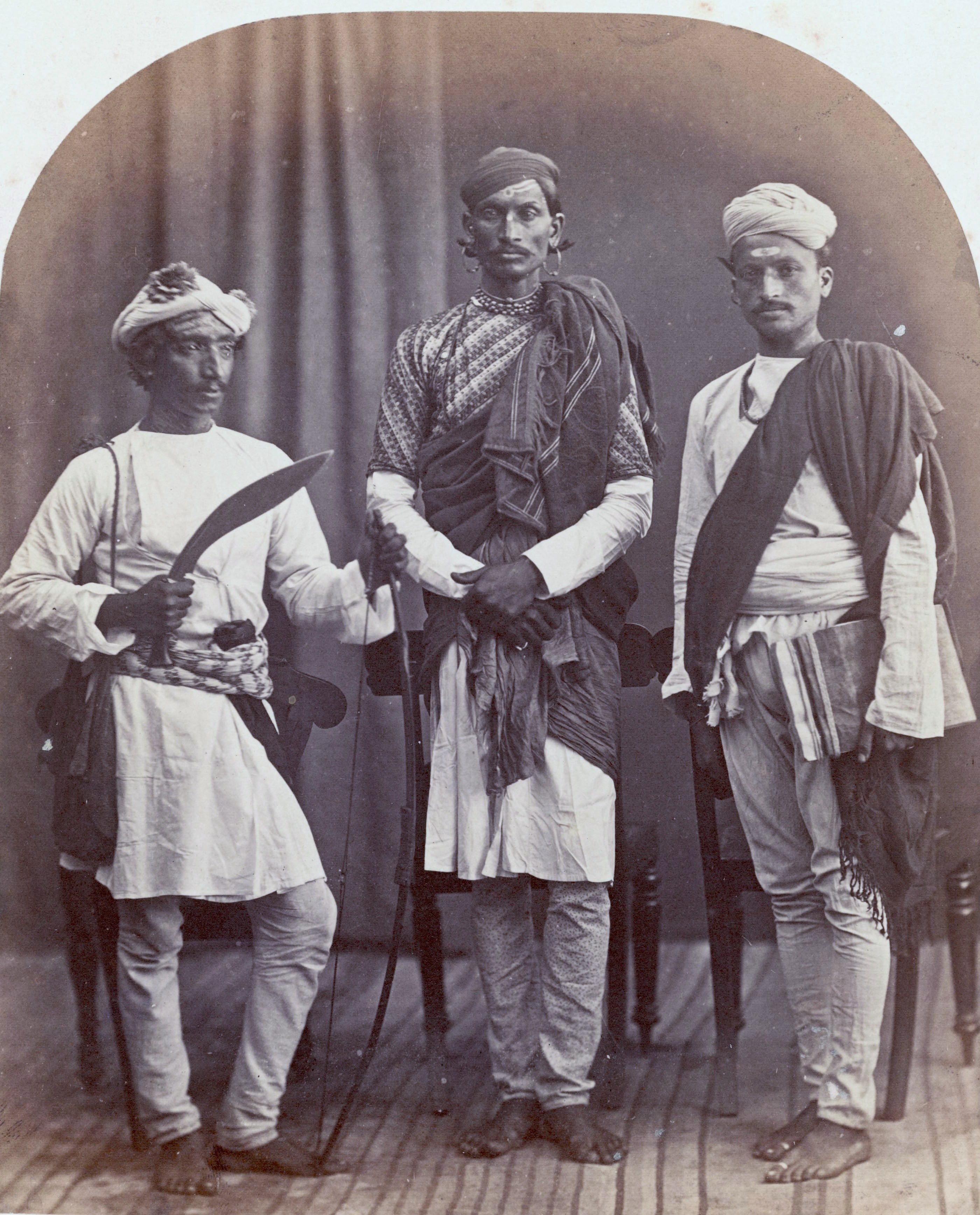|
Pathare Prabhu (Kanchole)
The Pathare Prabhu Kanchole caste is one of the two sections of the original Pathare Prabhu caste of Mumbai. The Pathare Prabhus had settled in Mumbai, and the region thereabout in the 13th century, and gained prosperity during the development of Bombay by the British in the 18th century. The Pathare Prabhu Kancholes are a few hundred in number, and this section came into existence, within the major caste, in the year 1777, over a quarrel on the occasion of a marriage ceremony in the caste. This smaller section of the main caste is known as ''Kanchole Pathare Prabhus'', as the dispute leading to the schism in the original caste had centred about a '' kanchole'', i.e. a small vessel used for holding sandalwood paste for the purpose of anointing, in honour, the foreheads of guests. Division The incident causing the split in the greater Pathare Prabhu caste occurred in the year 1777, when, during the marriage ceremony in the caste, a small boy assigned the job of anointing the gue ... [...More Info...] [...Related Items...] OR: [Wikipedia] [Google] [Baidu] |
Pathare Prabhu
Pathare Prabhu is one of the Hindu communities in the city of Mumbai (formerly known as Bombay). Introduction The Pathare Prabhus and the Chandraseniya Kayastha Prabhus (CKPs) are considered sister communities, both being part of the 'Prabhu castes'. Both Pathare Prabhu and CKP follow the Advaita Vedanta Smartha tradition of Hinduism propounded by Adi Shankara. Along with all the Maharashtrian Brahmin castes and the CKP, they are considered one of the 'high' or 'elite' castes of Maharashtra. The Pathare Prabhu, in the 19th century would to refer to Bombay as 'Desh' (country). They formed the "Kshatriya Union Club" under which were the five primary collectives of Girgaon, Mazagaon, Parel, Mahim and Worli. In 1887, they held a meeting at the "Desh" level in which it was decided to stop inviting "naikins" (dancers) to sing at the Upanayana (thread ceremonies or "munja") and marriage celebrations. Historians cite an incident where a Pathare Prabhu member who broke this rule two ... [...More Info...] [...Related Items...] OR: [Wikipedia] [Google] [Baidu] |
Mumbai
Mumbai (, ; also known as Bombay — the official name until 1995) is the capital city of the Indian state of Maharashtra and the ''de facto'' financial centre of India. According to the United Nations, as of 2018, Mumbai is the second-most populous city in India after Delhi and the eighth-most populous city in the world with a population of roughly 20 million (2 crore). As per the Indian government population census of 2011, Mumbai was the most populous city in India with an estimated city proper population of 12.5 million (1.25 crore) living under the Brihanmumbai Municipal Corporation. Mumbai is the centre of the Mumbai Metropolitan Region, the sixth most populous metropolitan area in the world with a population of over 23 million (2.3 crore). Mumbai lies on the Konkan coast on the west coast of India and has a deep natural harbour. In 2008, Mumbai was named an alpha world city. It has the highest number of millionaires and billionaires among all ... [...More Info...] [...Related Items...] OR: [Wikipedia] [Google] [Baidu] |
Sandalwood Paste
Sandalwood is a class of woods from trees in the genus ''Santalum''. The woods are heavy, yellow, and fine-grained, and, unlike many other aromatic woods, they retain their fragrance for decades. Sandalwood oil is extracted from the woods for use. Sandalwood is often cited as one of the most expensive woods in the world. Both the wood and the oil produce a distinctive fragrance that has been highly valued for centuries. Consequently, some species of these slow-growing trees have suffered over-harvesting in the past. Nomenclature The nomenclature and the taxonomy of the genus are derived from this species' historical and widespread use. Etymologically it is ultimately derived from Sanskrit चन्दनं ''Chandana'' (''čandana''), meaning "wood for burning incense" and related to ''candrah'', "shining, glowing" and the Latin ''candere'', to shine or glow. It arrived in English via Late Greek, Medieval Latin and Old French in the 14th or 15th century. The sandalwood is indige ... [...More Info...] [...Related Items...] OR: [Wikipedia] [Google] [Baidu] |
Gotra
In Hindu culture, the term gotra (Sanskrit: गोत्र) is considered to be equivalent to lineage. It broadly refers to people who are descendants in an unbroken male line from a common male ancestor or patriline. Generally, the gotra forms an exogamous unit, with marriage within the same gotra being regarded as incest and prohibited by custom. The name of the gotra can be used as a surname, but it is different from a surname and is strictly maintained because of its importance in marriages among Hindus, especially among castes. Pāṇini defines ''gotra'' as ''apatyam pautraprabhrti gotram'' (IV. 1. 162), which means "the word ''gotra'' denotes the descendance (or descendants), ''apatya'', of a couple consisting of a ''pautra'', a son and a ''bharti'', a mother, i.e. a daughter-in-law." (Based on Monier Williams Dictionary definitions.) When a person says "I am Vipparla-gotra", he means that he traces his descent to the ancient sage Vipparla by an unbroken male descen ... [...More Info...] [...Related Items...] OR: [Wikipedia] [Google] [Baidu] |
Shankaracharya
Shankaracharya ( sa, शङ्कराचार्य, , " Shankara-''acharya''") is a religious title used by the heads of amnaya monasteries called mathas in the Advaita Vedanta tradition of Hinduism. The title derives from Adi Shankara; teachers from the successive line of teachers retrospectively dated back to him are known as Shankaracharyas. Establishment of the tradition According to a tradition developed in the 16th century, Adi Shankara set up four monasteries known as Mathas or Peethams, in the North, South, East and West of India, to be held by realised men who would be known as Shankaracharyas. They would take on the role of teacher and could be consulted by anyone with sincere queries of a spiritual nature. Another monastery Kanchi Kamkoti Peeth in south India also derives its establishment and tradition to Adi Shankara, however its heads are called "Acharya" or "Jagadguru" instead of "Shankaracharya". The table below gives an overview of the four main Shankara ... [...More Info...] [...Related Items...] OR: [Wikipedia] [Google] [Baidu] |
Shudra
Shudra or ''Shoodra'' (Sanskrit: ') is one of the four ''Varna (Hinduism), varnas'' of the Hindu caste system and social order in ancient India. Various sources translate it into English as a caste, or alternatively as a social class. Theoretically, class serving other three classes. The word caste comes from the Portuguese word casta. The word ''Shudra'' appears in the ''Rig Veda'' and it is found in other Hindu texts such as the ''Manusmriti'', ''Arthashastra'', ''Dharmashastras'' and ''Jyotish#Zodiac, Jyotishshastra''. In some cases, shudras participated in the coronation of kings, or were Minister (government), ministers and kings according to early Indian texts. History Vedas The term ''śūdra'' appears only once in the ''Rigveda''. This mention is found in the mythical story of creation embodied in the ''Purusha Sukta ("The Hymn of Man").'' It describes the formation of the four varnas from the body of a Purusha, primeval man. It states that the brahmin emerged from h ... [...More Info...] [...Related Items...] OR: [Wikipedia] [Google] [Baidu] |
Peshwa
The Peshwa (Pronunciation: e(ː)ʃʋaː was the appointed (later becoming hereditary) prime minister of the Maratha Empire of the Indian subcontinent. Originally, the Peshwas served as subordinates to the Chhatrapati (the Maratha king); later, under the Bhat family, they became the ''de facto'' leaders of the Maratha Confederacy, with the Chhatrapati becoming a nominal ruler. During the last years of the Maratha Empire, the Peshwas themselves were reduced to titular leaders, and remained under the authority of the Maratha nobles and the British East India Company. All Peshwas during the rule of Shivaji, Sambhaji and Rajaram belonged to Deshastha Brahmin community. The first Peshwa was Moropant Pingle, who was appointed as the head of the Ashta Pradhan (council of eight ministers) by Chhatrapati Shivaji Maharaj, the founder of the Maratha Empire. The initial Peshwas were all ministers who served as the chief executives to the king. The later Peshwas held the highest admin ... [...More Info...] [...Related Items...] OR: [Wikipedia] [Google] [Baidu] |
Kshatriya
Kshatriya ( hi, क्षत्रिय) (from Sanskrit ''kṣatra'', "rule, authority") is one of the four varna (social orders) of Hindu society, associated with warrior aristocracy. The Sanskrit term ''kṣatriyaḥ'' is used in the context of later Vedic society wherein members were organised into four classes: ''brahmin'', kshatriya, ''vaishya'' and ''shudra''. History Early Rigvedic tribal monarchy The administrative machinery in the Vedic India was headed by a tribal king called Rajan whose position may or may not have been hereditary. The king may have been elected in a tribal assembly (called Samiti), which included women. The Rajan protected the tribe and cattle; was assisted by a priest; and did not maintain a standing army, though in the later period the rulership appears to have risen as a social class. The concept of the fourfold varna system is not yet recorded. Later Vedic period The hymn '' Purusha Sukta'' to the ''Rigveda'' describes the symbolic creati ... [...More Info...] [...Related Items...] OR: [Wikipedia] [Google] [Baidu] |
Laxman Balkrishna Nayak
Lakshman or Laxman is a common Indian name, most commonly used as a masculine given name. It derives from Lakshmana, the character of the Ramayana epic. Given name * Lakshmana (Chahamana dynasty), 10th century Indian king * Lakshman Kadirgamar, Sri Lankan politician * Lakshman Kiriella, Sri Lankan politician * Laxman Narasimhan, Indian businessman, CEO-designate of Starbucks * Lakshman Senewiratne, Sri Lankan politician * Lakshman Sen, king of Bengal * Laxman Singh, ruler of princely state of Dungarpur from 1918 to 1989 * Lakshman Singh (politician) (born 1955), Indian politician * Lakshman Singh (scouting) (1911-1994), Indian leader in the Scout movement * Laxman Sivaramakrishnan, Indian cricketer and commentator * Lakshman Yapa Abeywardena, Sri Lankan politician Surname * Bangaru Laxman, Indian politician * R.K. Laxman, Indian cartoonist * V. V. S. Laxman Vangipurapu Venkata Sai Laxman (; born 1 November 1974) is a former Indian international cricketer and a former cric ... [...More Info...] [...Related Items...] OR: [Wikipedia] [Google] [Baidu] |
Mukund Ramrao Jaykar , an Indian name, alternative transliteration of this name
{{given name, type=both ...
Mukund is an Indian name. Notable people with the name include: *Abhinav Mukund, Indian cricketer *Madhavan Mukund, Indian academic *Mukund Lal Agrawal, Indian politician *Mukund Lath, Indian academic *Mukund Parmar, Indian cricketer *Mukund Purohit, Indian businessman *Mukund Sathe, Indian cricketer *Mukund Varadarajan, Indian officer *Sanjay Mukund Kelkar, Indian politician See also *Mukunda, a name for Vishnu *Mukunda (given name) Mukunda is a given name. Notable people with the given name include: *Mukunda Das (1878-1934), Bengali poet * Mukunda Goswami (born 1942), American Hindu leader * Mukunda Hari Shrestha (born 1955), Nepalese long-distance runner *Mukunda Michael Dew ... [...More Info...] [...Related Items...] OR: [Wikipedia] [Google] [Baidu] |
Indian Castes
The caste system in India is the paradigmatic ethnographic example of classification of castes. It has its origins in ancient India, and was transformed by various ruling elites in medieval, early-modern, and modern India, especially the Mughal Empire and the British Raj. It is today the basis of affirmative action programmes in India as enforced through its constitution. The caste system consists of two different concepts, '' varna'' and '' jati'', which may be regarded as different levels of analysis of this system. Based on DNA analysis, endogamous i.e. non-intermarrying Jatis originated during the Gupta Empire. Our modern understanding of caste as an institution in India has been influenced by the collapse of the Mughal era and the rise of the British colonial government in India. The collapse of the Mughal era saw the rise of powerful men who associated themselves with kings, priests and ascetics, affirming the regal and martial form of the caste ideal, and it also r ... [...More Info...] [...Related Items...] OR: [Wikipedia] [Google] [Baidu] |
.png)






